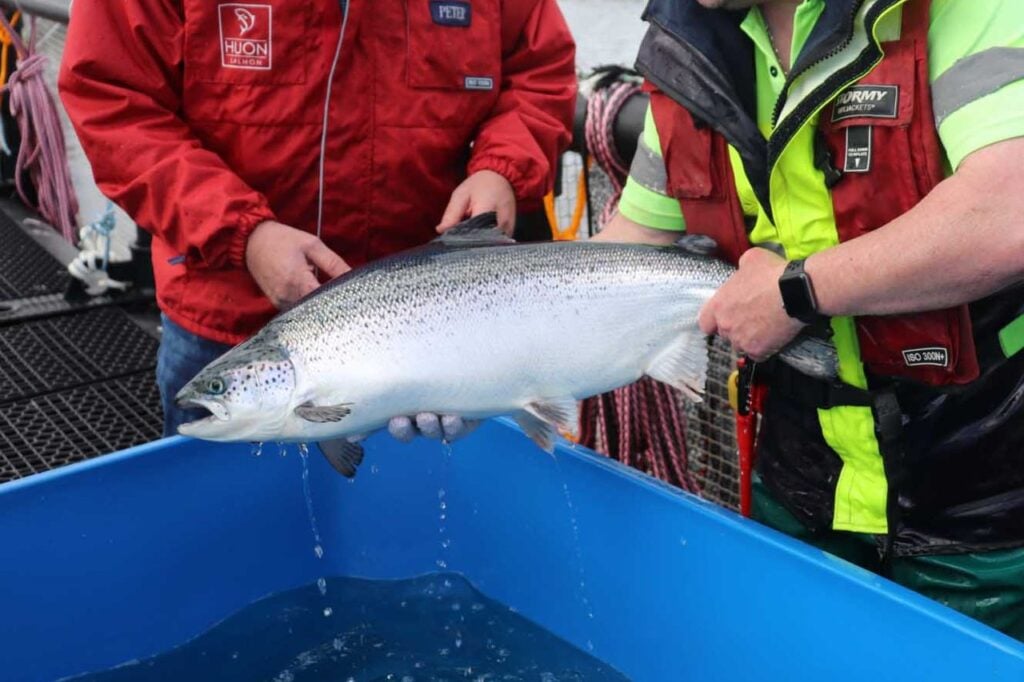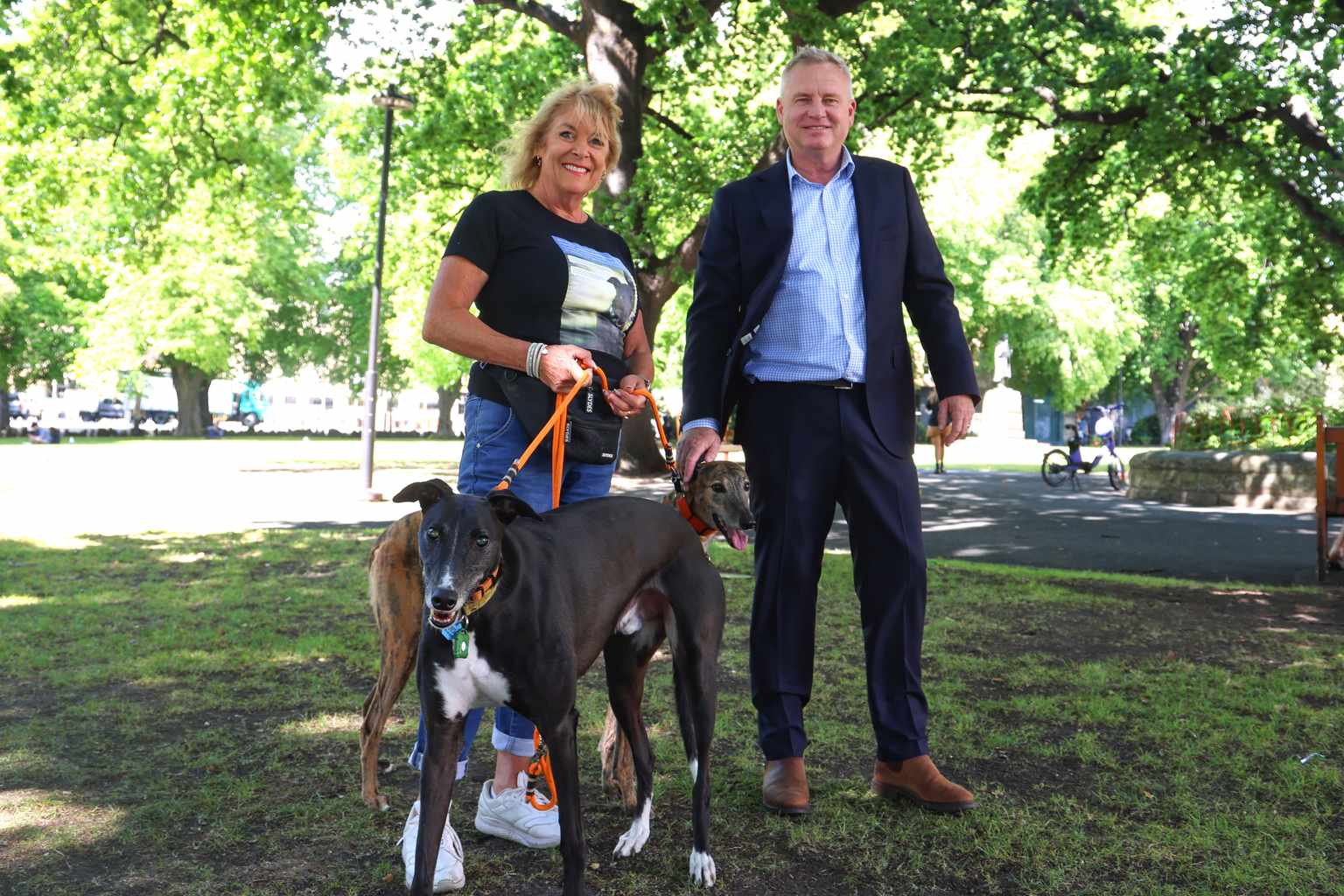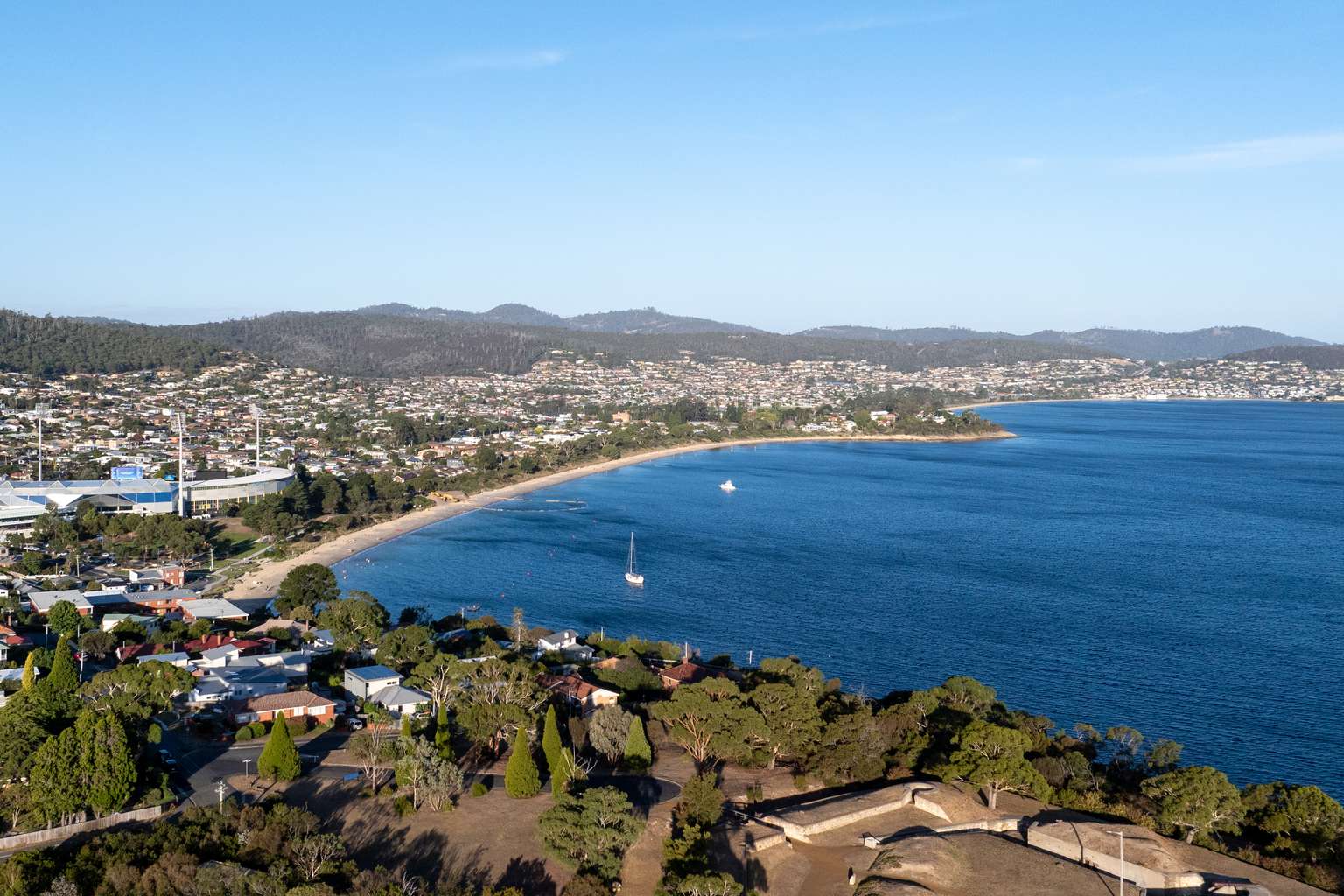Tasmania’s salmon industry is preparing to roll out a “new generation” of selectively bred fish it says are designed to withstand warming oceans and fend off the bacterial disease that wiped out stocks last summer.
The young salmon, now growing in freshwater nurseries, are expected to enter Tasmanian waters in February.
They were bred by geneticists at Tassal and Huon, who examined thousands of fish and analysed about 50,000 DNA markers per animal – comparing those affected by Piscirickettsia salmonis with those that survived.
“The emergence of [this disease] last summer really changed the game when it comes to which salmon we selected to breed, with a sharper focus on robustness,” Huon breeding program manager Lewis Rands said.
“We took every opportunity to learn lessons from the mortality event, testing the DNA of thousands of salmon, which redefined which family trees were preferred.”

“As devastating as it was to lose salmon last summer, the truth is the information we collected will now save the lives of millions and millions more salmon into the future.”
Selective breeding has been used in Tasmania since 2004 and involves pairing males and females with desirable traits – similar to how Wagyu cattle or thoroughbred horses are bred, Rands said.
But the arrival of Piscirickettsia salmonis pushed the program towards an even “sharper focus on robustness and disease resistance”, he said.
Tassal’s head of environment Sean Riley said the breeding team selected “the top 1% of fathers” to parent this generation.
“This is part of an ongoing commitment to fish health and performance,” he said.

“We will continue DNA testing year on year to ensure we’re breeding the healthiest, most resilient salmon to thrive in our waters.”
Salmon Tasmania CEO John Whittington said the breeding program was one of several measures being used to prevent a repeat of last summer’s losses.
“Over this year, we’ve made some unprecedented changes to the way salmon are bred, fed, vaccinated and even protected in the water with innovations like the jellyfish bubble curtain,” he said.
“But there is no silver bullet and that’s why we need every tool possible to help address the real-time and complex health needs of our salmon.”
The development comes as the industry remains under scrutiny, with the state government launching an independent review of the sector in August.
It is also facing pressure from environmental groups following the recent rollout of the antibiotic florfenicol in southern waters.







